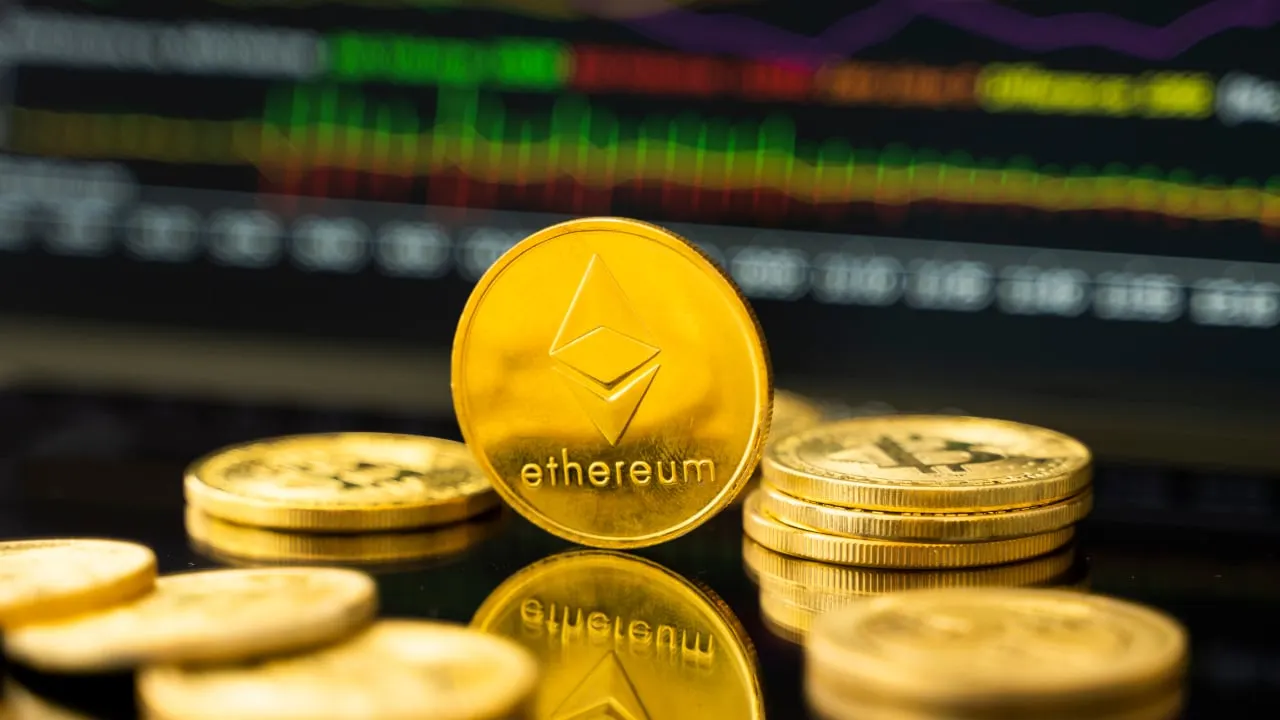Following the unexpected approval of spot Ethereum exchange-traded funds (ETFs) in May, and some final touches to regulatory paperwork, the long-awaited products started trading today.
An ETF is a popular investment vehicle that allows investors to buy shares that track the price of an underlying asset. This could be anything from gold and foreign currencies to crypto and tech stocks. Such funds trade on stock exchanges.
The U.S. Securities and Exchange Commission (SEC) shocked traditional and crypto markets when it finally said yes to 11 spot Bitcoin exchange-traded funds in January. The approval—which came after a decade of denials—led to a flood of capital into the Bitcoin space.
Industry experts had expected the SEC to be slower in approving the Ethereum equivalents following the regulator’s reticence—but it quietly and quickly approved the funds. Now, two months after initial approvals, the spot ETFs began trading on Tuesday, July 23.
Here are the products now trading on U.S. stock exchanges.
BlackRock
BlackRock’s iShares Ethereum Trust (ETHA) is now trading on the Nasdaq after the company first filed an S-1 form for the product back in November.
https://www.youtube.com/watch?v=se1bcqMYg8g
The firm’s CEO, Larry Fink, is apparently enthusiastic about ETH and its network, and has said that there is “value in having an Ethereum ETF.” He has also talked about the “tokenization” of real-world assets being inevitable.
Grayscale
Crypto asset manager Grayscale got a yes from the SEC after filing a proposal in October to convert its Grayscale Ethereum Trust into a spot Ethereum ETF.
Formerly operating like a closed-end fund, Grayscale Ethereum Trust (ETHE) is now trading as an ETF on the NYSE Arca. Its Bitcoin Trust converted into an ETF in January, so there was already precedent for how such a crypto vehicle can transition over to a spot ETF.
But it isn’t the only Ethereum product the asset manager will release: a mini Ethereum ETF also got the green light last week and is now trading under the “ETH” ticker.
The mini trust is seeded with assets currently backing the main, bigger ETF, and has lower fees for investors than its original proposed product at 0.15%. The Grayscale Ethereum Mini Trust (ETH) will also waive its fees for six months or until it hits an assets under management (AUM) mark of $2 billion.
Greg Cipolaro, Global Head of Research at NYDIG, argued in a research note shared with Decrypt that Grayscale’s mini Ethereum ETF represents a “strategic move” by the asset manager. “Unlike the launch of Bitcoin ETFs, where a low-cost ‘accumulation’ fund was lacking, Grayscale is now positioned to compete for inflows,” he said, adding that ETF providers will likely compete based on marketing and distribution rather than fees.
Grayscale is a big part of the reason why Bitcoin ETFs are trading in the U.S. right now. In a landmark moment for the crypto industry last year, a judge sided with the firm in a lawsuit, agreeing with the firm that Wall Street’s biggest regulator lacked a coherent explanation for denying its proposed conversion to a Bitcoin ETF after years of denials.
The ruling paved the way for the SEC to give the green light to spot Bitcoin ETFs.
21Shares
Cathie Wood’s heavyweight tech investment management firm, ARK Invest, filed a proposal with the SEC for an Ethereum ETF back in September.
The proposed ETF was launched in partnership with crypto ETF issuer 21Shares, naming Coinbase, America’s biggest digital asset exchange, as its custodian—meaning that the recognized company would hold and store the ETH in the product.
But in June, ARK Invest ended its partnership with 21Shares on the spot Ethereum ETF, leaving the crypto ETF issuer to go it alone. The rebranded 21Shares Core Ethereum ETF (CETH) launched today and charges a fee of 0.21%, which it will waive for six months or until its AUM hits $500 million.
Fidelity
Financial services giant Fidelity made it clear that it wanted to drop an Ethereum ETF back in November when Cboe—the exchange where the product would trade—filed a 19b-4 on behalf of the firm.
Then, in March, the massive firm filed its S-1 with the SEC for its Fidelity Ethereum Fund (FETH), which is now trading as of Tuesday. FETH charges a fee of 0.25%, which it will waive until the end of 2024.
VanEck
Asset manager VanEck was the first fund manager to file a proposal for an Ethereum ETF with the SEC back in 2021. The firm withdrew its proposal later that year, but then filed again.
The firm’s Bitcoin ETF has been a successful product, and VanEck even waived its fees to better compete with the other funds on the market. Its Ethereum ETF (ETHV) is now trading on the Cboe. It’s taking a similar approach with the ETHV, which is charging a base fee of 0.20% that is waived for the first year of its operation—or until the fund hits $1.5 billion in AUM.
Franklin Templeton
Wall Street giant Franklin Templeton entered the race in February when it filed a proposal with the SEC. The firm's Franklin Bitcoin ETF launched earlier this year and trades under the EZBC ticker.
The Franklin Ethereum ETF (EZET) is charging a 0.19% fee, which will be waived either until the end of January 2025, or until the fund hits $10 billion in AUM.
Invesco/Galaxy Digital
Asset management giant Invesco submitted a proposal with Mike Novogratz’s Galaxy Digital for an ETH ETF back in September. The S-1 form mentioned that Invesco would be the sponsor for the product, while Galaxy Digital would work as its “execution agent”—selling ETH to pay the Invesco Galaxy Ethereum ETF’s expenses.
The Invesco Galaxy Ethereum ETF (QETH) is now charging a base fee of 0.25%, with no discount offered.
Bitwise
Digital asset investment firm Bitwise filed its S-1 form with the SEC to offer a spot Ethereum ETF back in March.
Matt Hougan, Chief Investment Officer at Bitwise, had previously said that he expected ETH ETFs to launch in December—and predicted they would be more successful if approved later in the year anyway. But they ultimately arrived much sooner than that.
The Bitwise Ethereum ETF (BITW) is now trading and charges a base fee of 0.20%, waived for the first six months of its operation or until the fund tops $500 million.
Not trading
ProShares
ProShares’ spot Ethereum ETF was one of the last products to get the stamp of approval from the regulator—just this week, alongside Grayscale’s mini product—but it isn’t yet trading on a stock exchange.
The investment firm had initially applied only for futures products but quietly applied for a spot fund—though details are so far scant, with the firm yet to announce the ticker or fee structure for its spot Ethereum ETF. Per NYDIG, the ETF has an underlying index from Bloomberg.
Hashdex
In September, Nasdaq filed a proposal on behalf of Brazilian fund manager Hashdex for its Hashdex Nasdaq Ethereum ETF.
Hashdex has several crypto ETFs already trading in Brazil. In the United States, its Hashdex Bitcoin ETF was given the green light by the SEC in January and began trading in March.
However, Hashdex abandoned its bid for a spot Ethereum ETF in May 2024, shortly after eight other applicants were approved. Its proposed product would, uniquely, have combined spot ETH holdings with Ethereum futures contracts. The fund manager reportedly “no longer plans” to move forward with a single asset Ethereum ETF; in June 2024, it filed for a combined Bitcoin and Ethereum spot ETF that would hold both assets, called the Hashdex Nasdaq Crypto Index.
Ethereum ETFs and the price of ETH
Analysts are split on how the launch of multiple spot ETFs will affect Ethereum’s price. BRN’s Valentin Fournier argued that “the hype and inflows are already priced in for Ethereum,” anticipating a pullback to $2,800 and $3,100 due to “significant selling pressure that the ETF launch might not immediately counteract,” before bouncing back towards $4,000 by September.
A July 22 research note from Bernstein argued for a focus on the “Ethereum trade,” noting that it is “probably the only other digital asset likely to get a spot ETF approval by SEC” besides Bitcoin, and highlighting the fact that while BTC is up 3x from its 2023 trough, ETH has only reached 2x from its lows of the same time.
Edited by Andrew Hayward
Editor's note: This story was originally published on May 11, 2024 and last updated with new details on July 23.





